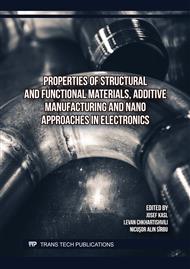p.9
p.15
p.23
p.31
p.39
p.47
p.59
p.71
p.83
Comparing the Mechanical Properties of Secure Ballistic Steels after Heat Treatment by the Q-P Process
Abstract:
Ballistic steels are used for the basic ballistic protection of armoured vehicles against the compressive energy of exploding munitions and the impact energy of projectiles fired from small arms. Steels with hardness up to 500 HBW are used to protect the chassis of armoured vehicles. Steels with a hardness greater than 500 HBW are used to protect the cabs and turrets of armoured vehicles. Ballistic steels belong to the class of low alloy high strength steels where a good combination of high strength and toughness is required. Higher strength is achieved in the final production process which involves heat treatment by quenching and tempering. This treatment creates a martensitic structure. Another heat treatment option is the Q-P (quenching and partitioning) process, where higher material strengths can be achieved in some steels while maintaining ductility. This paper focuses on a comparison of the microstructure as observed using a light microscope of the ballistic steel Secure after heat treatment by the manufacturer and after heat treatment by the Q-P process. It was found that the Q-P process produces a finer grained structure and a change in mechanical properties due to the stabilised austenite and strained martensite in the microstructure of the ballistic steel.
Info:
Periodical:
Pages:
39-43
Citation:
Online since:
November 2025
Authors:
Price:
Сopyright:
© 2025 Trans Tech Publications Ltd. All Rights Reserved
Share:
Citation:


